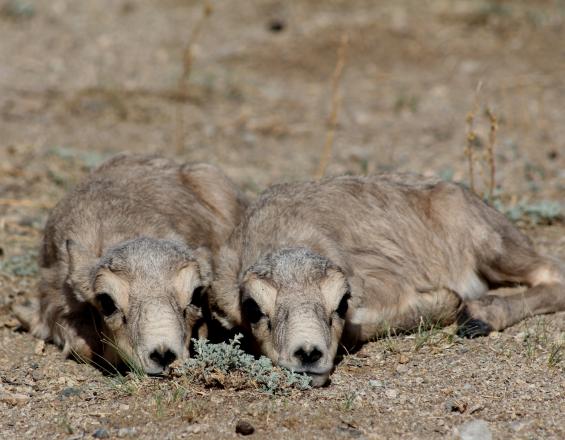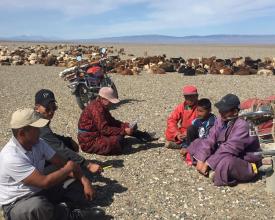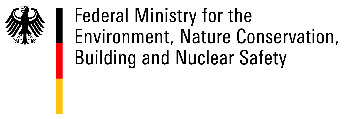La surveillance et la réponse intégrées aux maladies du bétail et de la faune sauvage favorisent la conservation de la Saïga et les moyens de subsistance en Mongolie

Le suivi, la surveillance et la réponse intégrés du bétail et de la faune sauvage sont essentiels pour guider la mise en œuvre des mesures de contrôle des maladies afin de protéger la biodiversité et les moyens de subsistance. L'amélioration de la surveillance de la faune et l'analyse des épidémies en Mongolie ont montré que la faune était victime de la propagation des maladies du bétail, et non la source des épidémies comme on le pensait auparavant. Cela a permis d'éviter l'abattage massif d'animaux sauvages et de s'orienter vers des efforts de lutte contre les maladies respectueuses de la faune sauvage. Des stratégies concernant à la fois le bétail et la faune sauvage sont actuellement élaborées pour contrôler et éradiquer le virus de la peste des petits ruminants (PPR) en Mongolie. L'intégration de la faune sauvage est désormais reconnue comme essentielle dans les stratégies globales d'éradication de la PPR. La sensibilité de la saïga aux épidémies étant mieux comprise, des protections commerciales accrues ont été mises en place dans le cadre de la Convention sur le commerce international des espèces de faune et de flore sauvages menacées d'extinction (CITES), ce qui contribuera à préserver la survie de la saïga de Mongolie.
Contexte
Défis à relever
Cette solution permet de relever les défis de la conservation de la biodiversité de la saïga et d'autres ongulés sauvages, ainsi que des carnivores sauvages qui dépendent de ces animaux comme source de nourriture. L'amélioration de la surveillance et de la compréhension de l'épidémiologie des maladies conduit à des interventions plus appropriées pour le contrôle des maladies, ce qui permet de relever les défis en matière de santé du bétail, avec des retombées positives sur les moyens de subsistance et la sécurité économique des éleveurs dont les animaux partagent l'environnement de la steppe avec les ongulés sauvages.
Emplacement
Traiter
Résumé du processus
Le développement de réseaux de communication et de collaboration multisectoriels et le renforcement des capacités dans ces secteurs, du niveau local au niveau national, sont des éléments essentiels à la réussite de la surveillance de la faune et de la flore sauvages dans le cadre de l'initiative "Une seule santé" et à la mise en œuvre de solutions efficaces en coordination avec les communautés locales.
Blocs de construction
1. Coordination multisectorielle pour la surveillance des maladies à l'interface entre la faune sauvage et l'élevage
L'établissement de partenariats entre les secteurs de la gestion des urgences, de la santé animale et de l'environnement/de la faune sauvage est une première étape importante pour la planification et la mise en œuvre de la surveillance de la faune sauvage, afin de s'assurer que les résultats sont utilisés pour orienter les politiques fondées sur la science et les mécanismes de contrôle des maladies. Il est essentiel d'organiser des réunions multisectorielles pour ouvrir le débat et partager des informations sur les défis et les possibilités de surveillance et de gestion des maladies à l'interface entre la faune sauvage et l'élevage, et pour développer une communication fluide et la confiance entre les secteurs et les réseaux multisectoriels de surveillance et d'intervention.
Facteurs favorables
Soutien financier pour les réunions de coordination ; ouverture du gouvernement hôte à la coordination entre les secteurs de l'environnement/de la faune et de la santé du bétail ; temps et patience
Leçon apprise
La coordination et le soutien du gouvernement sont essentiels dès le départ pour assurer le soutien de la surveillance, la compréhension de ce qui est mis en œuvre et des objectifs/résultats, une bonne coordination entre les secteurs, l'engagement de renforcer les capacités locales et d'exporter des échantillons pour les tests si nécessaire, la volonté du gouvernement hôte d'être ouvert aux résultats du diagnostic et la motivation de modifier les stratégies de contrôle de la maladie sur la base des résultats.
Collecte de données de base sur la santé de la faune
Le suivi et la surveillance de la faune sauvage (populations saines ou présentant des signes de maladie), les tests sérologiques de routine pour l'exposition aux agents pathogènes fréquemment partagés avec le bétail, ainsi que les diagnostics plus approfondis, par exemple PCR/NGS, sur les animaux malades ou morts, permettent de mieux comprendre la circulation des agents pathogènes dans ces populations, la répartition géographique et temporelle et les délais d'exposition et de non-exposition des différentes populations. L'intégration de ces données avec les données de surveillance du bétail contribue à la compréhension de l'épidémiologie des maladies et de la dynamique des foyers de maladie, y compris la source potentielle, afin de mettre en œuvre des stratégies de contrôle efficaces fondées sur la science.
Facteurs favorables
Soutien financier pour la surveillance ; capacité humaine pour la surveillance, la gestion et l'analyse des données ; accès aux sites pour effectuer la surveillance ; chaîne du froid/capacité de stockage des échantillons ; capacité de diagnostic précis sur le terrain et/ou en laboratoire ; bonne coordination entre les secteurs de l'environnement/de la faune et de la santé du bétail ; ouverture au partage des résultats par le gouvernement hôte.
Leçon apprise
La coordination et le soutien du gouvernement sont essentiels dès le début pour assurer le soutien de la surveillance, la compréhension de ce qui est mis en œuvre et des objectifs/résultats, une bonne coordination entre les secteurs, l'engagement de renforcer les capacités locales et d'exporter des échantillons pour les tests si nécessaire, la volonté du gouvernement hôte d'être ouvert sur les résultats du diagnostic et la motivation pour modifier les stratégies de contrôle de la maladie sur la base des résultats. La santé de la faune sauvage est sous-financée dans tous les pays par rapport aux secteurs de l'élevage et de la santé humaine et le soutien de donateurs externes est presque certainement nécessaire pour le succès de tels programmes dans les PRFM et les PRI. Il faut beaucoup de temps et de patience pour développer des réseaux de surveillance de la santé de la faune sauvage véritablement fonctionnels et localisés, intégrés à d'autres réseaux de surveillance nationaux
Renforcement des capacités locales pour la gestion des maladies à l'interface entre la faune sauvage et le bétail
De nombreux pays disposent d'un financement limité pour la surveillance de la santé de la faune sauvage. Il est donc essentiel de développer cette capacité et la connaissance de la santé de la faune sauvage et de l'épidémiologie des maladies en rapport avec l'interface faune sauvage-élevage aux niveaux local, provincial et central pour assurer une surveillance durable et pour que la valeur réelle de cette surveillance soit réalisée, y compris son utilisation pour mettre en œuvre des interventions respectueuses de la faune sauvage qui soutiennent également l'amélioration de la santé du bétail.
Facteurs favorables
Soutien financier externe et gouvernemental pour le développement du secteur de la santé de la faune sauvage, y compris la surveillance et le diagnostic ; intérêt du gouvernement hôte pour le développement de la capacité de santé de la faune sauvage ; temps et disponibilité du personnel à former
Leçon apprise
Le développement des capacités locales de surveillance de la santé de la faune sauvage est essentiel pour la durabilité de ces efforts et les avantages durables de l'initiative One Health.
Mise en œuvre de stratégies efficaces de lutte contre la propagation des maladies du bétail à la faune sauvage
La coordination multisectorielle, ainsi que la communication et la coordination avec les communautés locales, sont essentielles pour partager clairement et simplement les résultats de la surveillance et les raisons pour lesquelles des stratégies de gestion spécifiques ont été élaborées et sont recommandées pour la mise en œuvre. Il s'agirait, par exemple, de vacciner le bétail domestique contre la PPR dans les zones où leur aire de répartition chevauche celle d'importantes populations d'animaux sauvages, afin de protéger la santé du bétail et de réduire le risque de propagation aux ongulés sauvages.
Facteurs favorables
Soutien financier à la vaccination ou à d'autres stratégies de gestion ; bonne coordination et communication entre les secteurs ; bonne communication et relations avec les communautés locales d'éleveurs ; accès aux vaccins et capacité de stockage appropriée ; capacité humaine à mettre en œuvre une campagne de vaccination efficace.
Leçon apprise
Des lignes de communication ouvertes entre les secteurs gouvernementaux concernés et entre le gouvernement et les communautés, ainsi que leur compréhension de l'épidémiologie de la maladie, sont essentielles pour mettre en œuvre des stratégies efficaces de contrôle de la maladie qui répondent aux préoccupations de toutes les parties prenantes impliquées.
Impacts
Dans le passé, le rôle de la faune sauvage dans les épidémies de maladies du bétail était mal compris. Lors des épidémies de fièvre aphteuse en 2000, les gazelles de Mongolie ont été considérées comme des réservoirs de la maladie et ont fait l'objet d'un abattage massif. Des analyses temporelles et spatiales réalisées par des experts internationaux de la santé de la faune sauvage ont montré que les gazelles étaient en fait les victimes de la propagation du virus à partir du bétail, ce qui a permis aux autorités de mieux comprendre l'épidémiologie de la fièvre aphteuse. La destruction massive de la faune sauvage a été reconnue comme une mesure de contrôle inefficace et des approches respectueuses de la conservation ont été adoptées. En 2016, la PPR a été diagnostiquée chez le bétail domestique, s'est propagée aux ongulés sauvages et a tué plus de 80 % des Saïgas de Mongolie. La surveillance de la faune sauvage a permis d'identifier les animaux sauvages comme des victimes et non comme la source initiale de l'infection. Au lieu d'abattre les animaux sauvages, les conseillers experts, les secteurs environnementaux et vétérinaires se sont coordonnés pour vacciner le bétail et minimiser la propagation de la PPR, sauvant ainsi la population de saïgas de Mongolie, en danger critique d'extinction, qui a rebondi à 8 500 individus.
La prise de conscience de l'importance de la faune sauvage et de son rôle écologique dans la préservation des steppes est un grand changement dans le secteur vétérinaire. Les partenaires s'efforcent désormais de concevoir des stratégies efficaces de contrôle de la PPR pour le bétail et la faune sauvage en Mongolie et d'intégrer la faune sauvage dans les stratégies mondiales d'éradication de la PPR (voir les lignes directrices de la FAO/WOAH ci-dessous).
Bénéficiaires
- Les communautés d'éleveurs qui dépendent du bétail pour leur stabilité économique et leurs moyens de subsistance
- Ongulés sauvages
- Les carnivores sauvages qui dépendent des ongulés sauvages pour se nourrir.
- Tous ceux qui dépendent de l'intégrité de l'écosystème de la steppe mongole.









